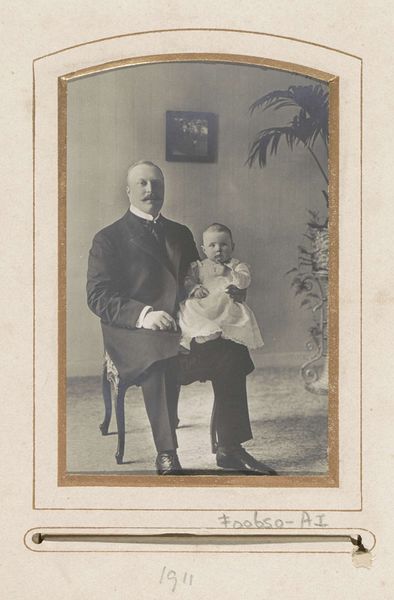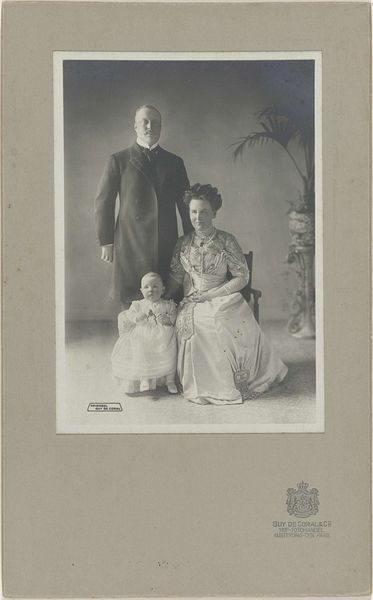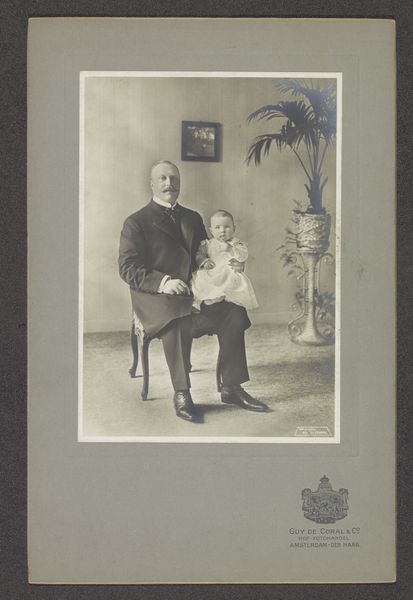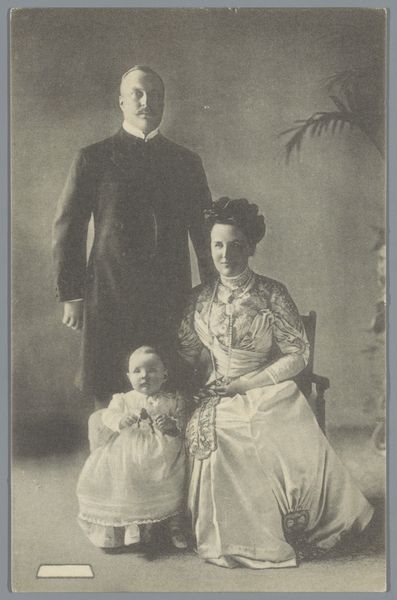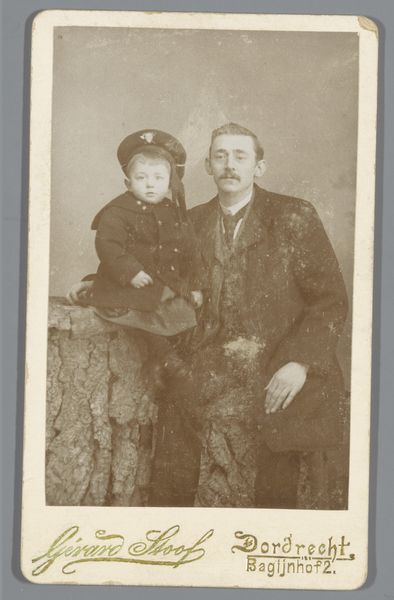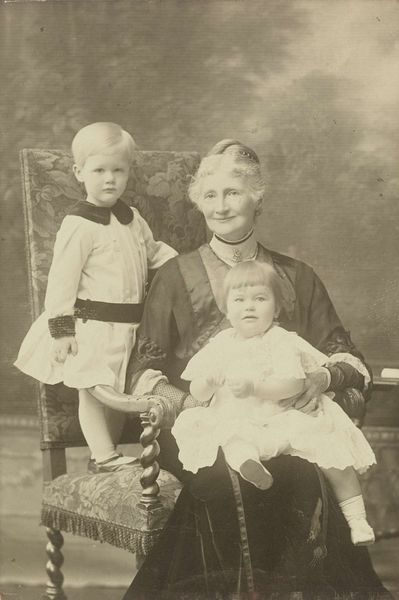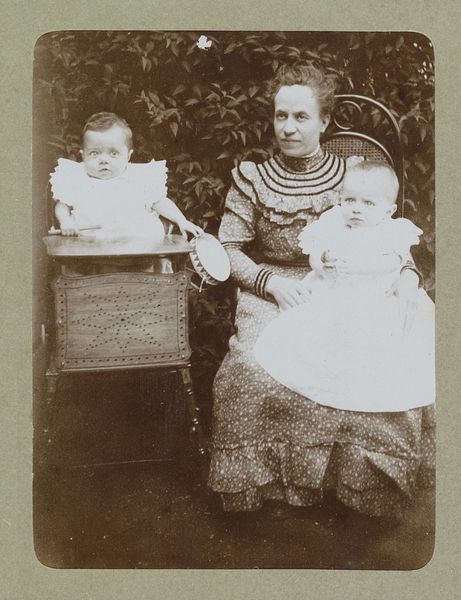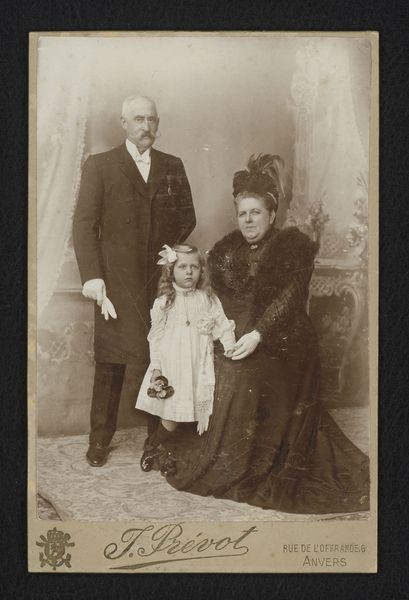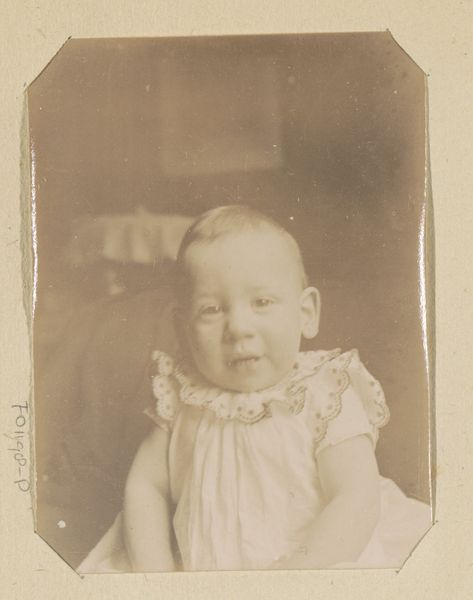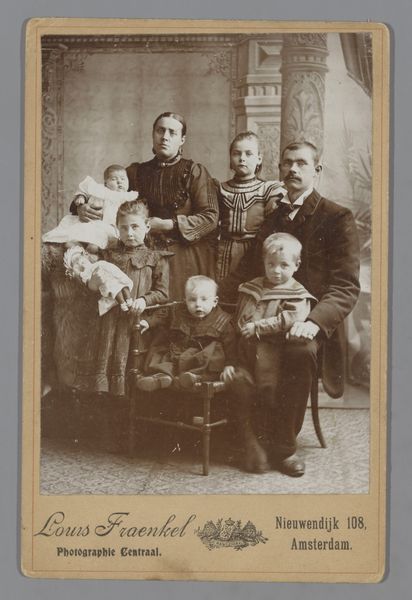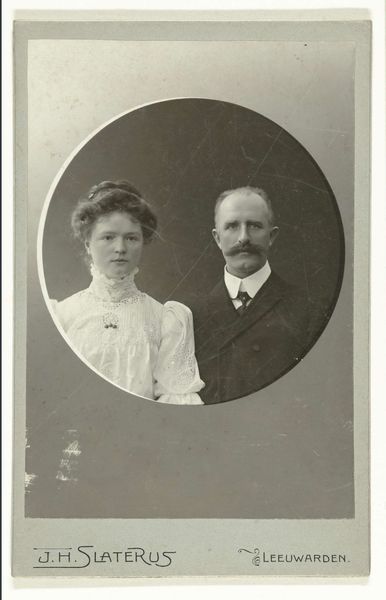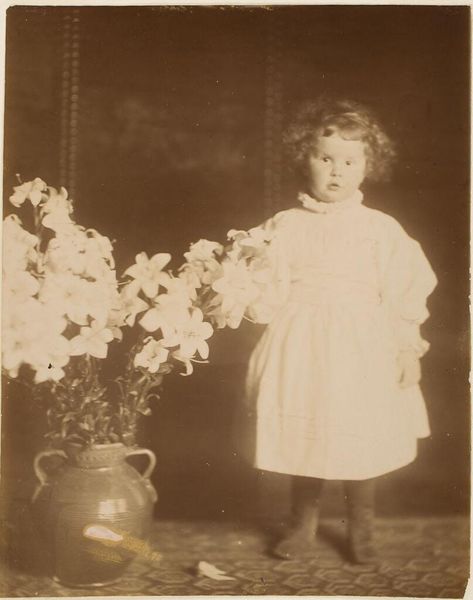
Portret van Hendrik van Mecklenburg-Schwerin en Juliana, koningin der Nederlanden 1909 - 1911
0:00
0:00
guydecoralco
Rijksmuseum
photography, gelatin-silver-print
#
portrait
#
archive photography
#
photography
#
historical photography
#
framed image
#
gelatin-silver-print
Dimensions: height 136 mm, width 85 mm
Copyright: Rijks Museum: Open Domain
Editor: Here we have a gelatin-silver print from around 1910, titled "Portrait of Hendrik van Mecklenburg-Schwerin and Juliana, Queen of the Netherlands," by Guy de Coral & Co. It’s quite a formal image; the princess looks like a doll, sitting so rigidly on her father's lap. What can you tell me about the historical and cultural context of this photograph? Curator: It's important to remember that royal portraits weren't simply aesthetic choices, they were carefully constructed narratives. This image, staged and disseminated through photography, reinforces dynastic power. Hendrik is presented as the patriarchal protector, and Juliana, even as an infant, carries the weight of succession. What strikes me is the complete lack of candidness. Where do you see evidence of performance within the constraints of royal life? Editor: Well, there’s the stiff posing and the formality of their clothes, but isn’t that to be expected in a royal portrait from that time? I mean, couldn’t it simply be a reflection of the era's conventions? Curator: Absolutely, but conventions are themselves potent signifiers. They create a visual language that perpetuates certain power structures and reinforces expectations, particularly surrounding gender roles and lineage. Photography, then, becomes a tool in the construction of national identity. Who do you think this image was intending to address and how did it benefit from photographic realism? Editor: That makes me see the picture differently now. It is less of a sweet portrait and more of a political statement about succession and legacy. Curator: Precisely! It reveals the fascinating intersection between the personal and the political, captured through the lens of early 20th-century photography. Understanding how seemingly innocuous images were used to cultivate certain narratives provides insight into the history of power itself.
Comments
No comments
Be the first to comment and join the conversation on the ultimate creative platform.
